 |
|
  06.14.02 06.14.02
click to enlarge

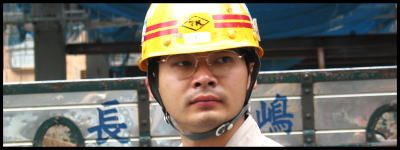
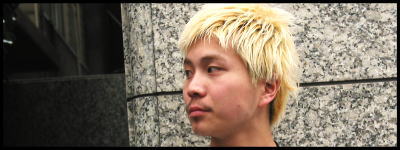

Someone wrote to me recently and asked me
what it's like living in Tokyo and how I
choose the subjects for my photographs. I
thought the rest of you might also be interested
in the answers that I gave.
In Tokyo, you are so overwhelmed by the massive
size of the city, the incessant barrage of
sensory stimuli, and the extraordinary density
of the crowds that you erect a translucent
bubble of personal space around yourself.
A thin, malleable, yet effective area of
'you-ness' that serves to delineate your
existence and protect you from the mind-numbing
enormity of the city that surrounds you.
In the haze that your bubble produces you
start to lose sight of the details of daily
existence, like the store clerk's red shoes,
or that strange mole on your neighbour's
face. People and buildings, motion and sound,
all start to blur and blend into one flat,
homogenous backdrop to reality. You stop
looking people in the eye. You walk down
the busy streets, being jostled and bumped
by strangers, and you don't even acknowledge
the cajoling of hawkers and people handing
out flyers, you just keep on walking without
so much as glancing in their direction.
However, if by chance one day you should
suddenly find yourself pausing to reflect
upon your life in Tokyo, if you should stick
your head outside of your bubble for a moment,
you'd soon come to realize that you are surrounded
by a mysterious sea of individuals, each
with his or her own story, a story that you
will most likely never get to hear. This
fascinates me.
That is why you will find the two reoccurring
themes in my photography are 'the individual
in context' and 'life's little details.'
  06.12.02 06.12.02
click to enlarge



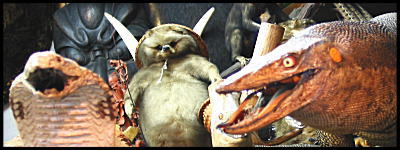
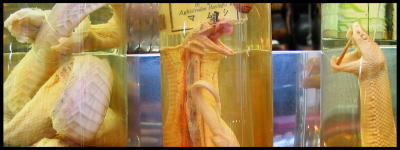

On Monday I wrote about how truly civilized
the Japanese people are when compared to
people from many other societies. To illustrate
this point I quoted some English soccer fans
who were raving about the hospitality shown
to them by the people of Saporro, hospitality
that was shown to them even though the generally
held belief in Japan was that the British
fans were going to run amok after their games.
Did you know that the Japanese fans at that
big England-Argentina game last week applauded
the British fans as they left the stadium,
just to be nice? Did you also know that at
many Japanese sporting events each team assembles
and bows to the fans of the rival team after
the game, its a sign of gratitude and 'no
hard feelings'?
In a fitting contrast the Tuesday edition
of the Japan Times published reports
about
soccer riots in Russia and China.
In Russia:
MOSCOW (AP) City authorities have banned
outdoor broadcasts of further World
Cup soccer
games, and the Russian prime minister
warned
Monday that riots that left two dead
could
cost the Russian capital its chance
to host
the 2008 European soccer championships.
Russian soccer
fans set cars ablaze, smashed store windows,
fought police and each other and attacked
a group of young Japanese musicians after
Russia's 1-0 loss to Japan on Sunday.
....Prosecutors have opened criminal investigations
into the beatings of two other foreigners
in metro stations near the riot, including
a U.S. citizen of Indian descent and a Chinese
man. |
In China:
|
BEIJING (AP) Thousands of irate Chinese
fans
overturned police cars and a bus and
tore
down street signs after a public television
screen was switched off minutes before
a
World Cup soccer game.
|
What's wrong with people? Why can't we all
be mature citizens like the Japanese?
---------------------------------
On the lighter side, I thought a few of you
might get a kick out of the origami boulder.
---------------------------------
Today's pictures are from an actual Chinese
doctor's office in Narita city. They have
an amazing display of stuffed animals and
animal parts (some of which must be illegal)
out front which serves to draw attention
to the clinic.
  06.10.02 06.10.02
click to enlarge

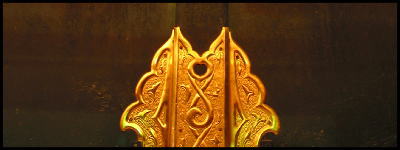
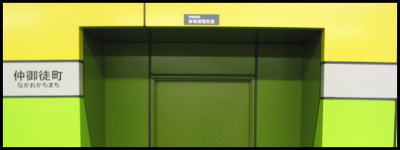



I've never really been much of a sports fan,
but the World Cup seems to be all that anybody
is talking about around here. I must admit
that I get caught up in everyone else's excitement,
or at least I try to.
I don't know whether to feel sorry for all
of those Japanese riot police who spent months
training for hooligan rampages that never
happened, or else to feel pleased that my
culture hasn't been besmirched in the eyes
of my Japanese hosts.
A lot of people here are surprised about
the lack of violence after last Friday's
England-Argentina game in Sapporo. The fans
themselves, however, don't seem to be surprised,
as illustrated in some interesting interviews
of English fans in today's Japan Times:
"The Japanese people have been so polite
and kind, why would we want to cause them
problems after what they have done for us,"
explains Kev, a cab driver from London. "English
football fans will always stick up for each
other if there is trouble and in previous
World Cups in France and Italy, locals had
provoked us into attacks. Here there has
been nothing of the sort as the Japanese
locals have been so welcoming to us. This
is the best World Cup I have been to since
Mexico in 1986," adds Kev, a veteran
fan of five World Cups.
|
...and this:
Identifiable by the Chelsea F.C. lion
tattooed
on his left forearm, this particular
fan
became animated when asked to describe
the
Japanese hospitality. "Blindin'
geezer!
A Japanese family invited me to stay
at their
home, gave me a room to stay in, cooked
me
dinner and even made me a packed lunch
for
the game the next day," he says.
|
Nice anecdotes, don't you think? I often
like to say that despite their various cultural
shortcomings, which are constantly being
pointed out by foreigners (myself included),
the Japanese have to be the most civilized
people in the world.
However, I still don't like sports.
------------------------------------
Hunkabutta's host has been having some
technical
difficulties this past week. I've just
recently
heard that some people have been having
problems
posting comments and viewing pictures.
I'm
sorry for this, I didn't know it was
happening.
If any of you regular hunkabutta readers
experience these kind of problems in the
future I'd appreciate it if you'd send me
an email and let me know. Sometimes these
kind of things escape my attention.
  06.07.02 06.07.02
click to enlarge
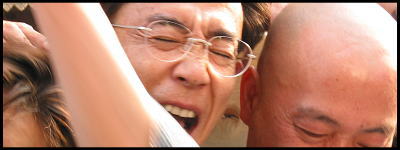
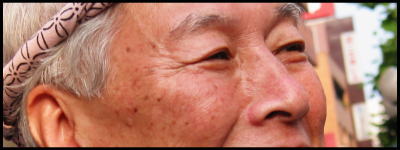
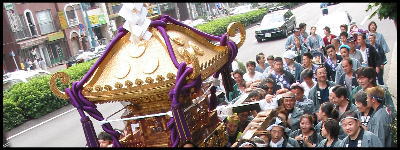
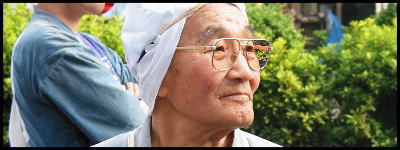
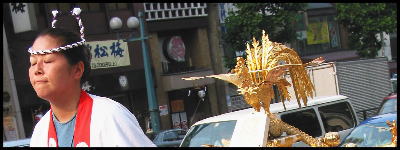
Last Sunday we went to Suga shrine's annual
matsuri in Shinjuku ward. A matsuri is a Shinto street festival.
To be honest, I don't know a whole lot about
the religious significance of the matsuri, but I've been told that it's a purification
and appeasement ceremony. However, because
they seem to be so popular among contemporary
Japanese people, and because Japanese people
are notoriously irreligious (I mean that
in a good way), I think that the most interesting
facet of the matsuri is the social role it plays, not the religious
role. It has probably survived into modern-day
Japan because it fulfills a significant social
need.
As far as I can tell, each matsuri is centered around a particular Shinto temple
and is a neighborhood affair. They last for
two or three days and consist of a 'parade'
and a children's fair around the temple.
Although each matsuri has its own unique features, the one thing
that seems to be common to them all is the
carrying of mikoshi. Mikoshi are portable, though extremely heavy, ornate
shrines. Each one is paraded around the neighborhood
by different 'teams' of people, each team
taking a different route. It is a very hectic
affair.
To me, the matsuri seemed like a community reaffirmation event.
People talked and intermingled, which, believe
it or not, is atypical here. There were drunks
and dancers, musicians and priests, and they
were all mixed in the crush of the mikoshi (portable shrine) parade. It was very tribal,
if that's the right word. People really
cut
loose.
The mikoshi are so heavy, the weather is so warm, and
people are so drunk, that the participants
kind of go into an altered mental state as
they carry the mikoshi. It's a celebration of group-work. It's
only possible to carry the mikoshi if everyone works together, and you have
to count on everyone continuing to hold it
aloft or else you'd get crushed. Feeling
this huge weight on your shoulders makes
you panicky and excited and heightens the
experience.
The mikoshi are not just carried, they're
jostled. The mikoshi bearers move forward
and side to side in an apparent effort to
make it even more difficult than it already
is to carry this huge thing around. People
jump up on top and make it even more heavy.
As people get exhausted they drop out of
the fray and others take their place.
There are two or three matsuri pretty much
every weekend throughout the summer, so expect
a few more photographs from these events.
For now you can check out the brand new matsuri gallery here on hunkabutta. You'll find today's
photos there as well as several others
only
viewable in the gallery.
--------------------------------
In other news, thanks to Joe Jenett for choosing
Hunkabutta as the Cool Stop of the day.
|
|
|
 |


7 comments so far